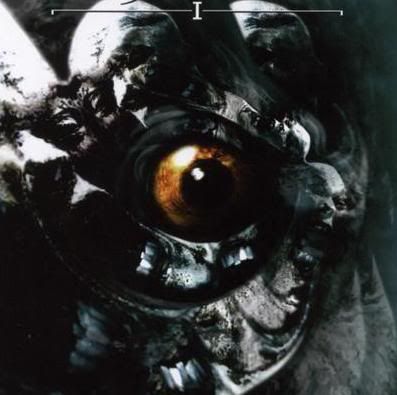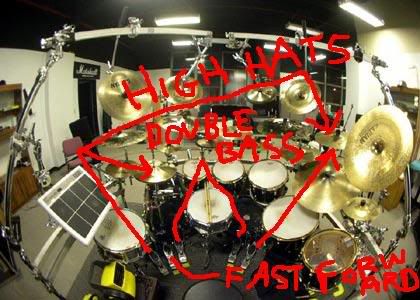 THE PART
THE PARTHow I’ve taken so long to get to this post I can’t really explain. Well, I think the reality is that I’m terrified of how difficult it will be to put into words the significance of this band and how they are not only one of the most important metal bands ever, but how they are also some of the most important individuals to ever pick up instruments and play music together.
From an outsiders perspective all metal sounds the same. Unfortunately for these outsiders and what they fail to realize is that everything from an unfamiliar perspective sounds the same. If you don’t listen to classical music, a violin is merely a stringed instrument. Just like if you don’t listen to metal, a polyrhythmic overlapping drum pattern sounds like ‘the drums’. The argument of ‘all things sounding the same’, though, while being mildly ignorant isn’t necessarily unfair as most of the time the music’s purpose is to work with, or contort something familiar. After all, if you can write a catchy tune who really cares if its foundation is constructed from the same ingredients (AC/DC)?. The reason for writing all that was to point out the fact that at times you get the rarity of a group that has managed to completely carve their own direction with a familiar art form to the point where they have absolutely no peers.
Opeth is the result of one man’s gift of songwriting and musicianship in combination with a few other guys who spent their teenaged years practicing to become better at what they do than the thing you think you’re best at. Their music is what happens when the talent can live up to ambition. This is not normal.
The ‘one man’ here is of course Mikael Akerfeldt; arguably the most versatile vocalist and songwriter in music today. He’s got your death growl well covered but it’s not until he shifts to his ‘other’ voice that the sweet sassy molassy factor of Opeth begins to reveal itself. This guy can sing. And this is no power metal wail, think Thom Yorke. Now in order for the softer vocals to work properly in the same song as the deep growl you need some well thought out transitions and it’s with these transitions that Opeth really shines. They weave sections together that should not, and normally would not work together. This can be attributed to a few things; one being that they’re ridiculously good, the other being that the average Opeth song is about 10 minutes long. Luckily for…well, us, the songs are so interesting that you don’t get bored. Like classical, Akerfeldt writes in terms of movements and not the typical verse/chorus/verse/chorus/bridge/end. It’s more like intro/verse/prog melt-down/chorus/acoustic bit/lead bit/variation of chorus/re-invention of the wheel/end of the world riff/verse/outro/better version of the outro/front-end loader to your face outro variation/end.
Moving on,
If you aren’t familiar with the song from Deliverance called Deliverance and I’m introducing it to you then I will relish the moment of being the annoying guy that always has to tell you about when the really good part of a movie is coming up. In this case it’s obviously a song though, well, in movie format.
Deliverance from the live Opeth DVD Lamentations
moments:
1:20 – First transition from loud to quiet. What is most interesting about the quieter Opeth moments is how inventive the chords and progressions are. I assume that the melody comes first and the chords are formed around that. That’s hard.
3:56 – Peter Lindgren makes his presence known with a Middle Eastern type lead. What you may notice here is something that applies to the entire band and frustrates the hell out of me. These guys actually play their instruments with the technique tips that you’re supposed to ignore when you look at beginner’s guides to how-to-play instruments (aka properly).

4:29 – Martin Lopez insults all drummers who don’t listen to what’s happening vocally during the songs they play. Listen to how the fill follows the vocal pattern, crafty stuff. Too bad he’s not in the band anymore, not like Axenrot isn’t a good replacement considering his drumstool residency in both Bloodbath and Witchery.
5:10 – After you threw away your ‘How to play guitar properly’ book written by Opeth you really should have picked up the edition they released called How to write killer transitions in epic songs. Here’s Example 1 from Chapter 1 where it stresses the importance of the ride symbol.
So it’s Opeth and the song is lengthy, here’s the second portion. Please pause this video at the 3:05 mark.
1:10 – This is Heavy with a capitol J for Jackhammer.
1:29 – More ride. Chapter 1, Example 2.
3:05 – Alright, this is important. In 2 seconds you will become familiar with an Opeth moment that among fans is commonly known as The Part. I spent quite a bit of time trying to figure out something to write here to prepare you for this but it was a waste of time. Un-pause and enjoy the fact that humans actually created this.
5:20 – They knew it so they worked it. The high part comes out, Opeth rules.
Like Enslaved, Opeth is a metal band that advances by exploring the past. On their most recent release, Ghost Reveries, they became even more influenced by 70’s prog and some songs even had Deep Purple-esque organ parts. What’s also interesting is that the album Deliverance was initially intended as a double-disc with the mellower acoustic based Damnation but label nonsense separated the records by about 5 or 6 months. Damnation is an album by a metal band that your parents/girlfriend/wife will probably like, especially your dad if he’s a big Floyd fan.


